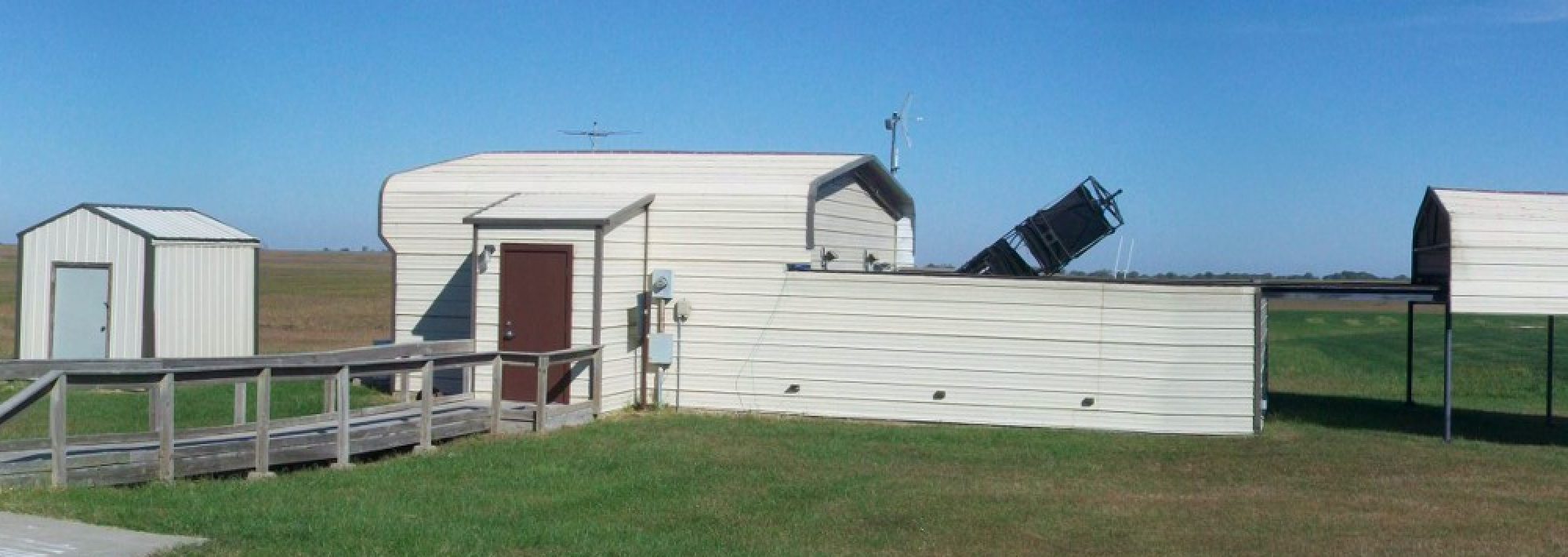The recent AAA magazine contained an article on observatories in Kansas. Farpoint Observatory was listed, but the public observing dates they printed were for 2016! The correct public observing dates for this summer are July 15 and 22, and August 19.
Summer Planet Show
There’s a planetary show going on now–Mars is as close as it’s been in a decade, Saturn’s at opposition, and Jupiter’s up in the west through July. This is a great time to come out to Farpoint, fellow star gazers. Jupiter will still be well up by the Open House on June 26, but will be getting pretty low by July 23. Mars and Saturn will be up all summer. The Open House on July 9 will have a near-first-quarter moon near Jupiter, so that’s probably not the best night for seeing Jupiter, but good for viewing lunar details up close.
Wherever you are, don’t miss the unique orange glow of Mars this summer. You won’t see it again for some time.
Telescope Workshop and Open Astronomy Forum
The February 25 General Meeting will be a hands-on telescope workshop and Astronomy Q and A. There will be several types of telescopes on display, with experienced scope drivers to demonstrate their use. You are welcome to bring your own telescope or binoculars for personalized assistance. The floor will be open for astronomy questions and topics. There may also be some videos, etc. on — topics unknown.
If you have a question, but are unable to attend, send it to us through the website and we’ll send you a response based on the discussion at the meeting.
Total Lunar Eclipse at Farpoint
Farpoint Observatory will be open around 7:30, September 27, for the total lunar eclipse. This eclipse is of the Harvest Moon, which is often thought to be larger and brighter than others, even though it’s just an illusion. But, it also just happens to occur at perigee, the moon’s closest point to the Earth in its orbit, so it actually will be slightly larger.
A lunar eclipse has several phases. The Penumbra is a faint shadow that isn’t visible without visual aid until near the next phase. The “dark” shadow starts across the face of the moon in the partial eclipse phase. The moon is completed in shadow during the total eclipse phase. As the moon moves out of the Earth’s shadow, the partial and penumbral phases follow, and the eclipse ends. For this eclipse, the phase times are listed below (All times CDT)
Penumbral eclipse begins: 7:12 PM
Partial eclipse begins: 8:01 PM
Total eclipse begins: 9:11 PM
Total eclipse ends: 10:23 PM
Partial eclipse ends: 11:27 PM
Penumbral eclipse ends: 12:23 AM (Sept. 28)
Do scientific research from your own home!
In a matter of minutes, you can do science and report it from your home computer or mobile device. NEKAAL is encouraging as many people as possible to participate in the Globe At Night program.
During a specified time period, just look at a certain part of the sky and match against a group of charts. Enter information and you’ve just contributed to science!
There’s one observing window each month. The next reporting period begins on September 15. For information on how to participate, go to the Globe At Night website here: http://www.globeatnight.org/5-steps.php
Harvest Moon/ Hunter Moon Switch
The Harvest Moon isn’t always in October, and this is one of those years.
A Harvest Moon is defined as the full moon closest to the autumnal equinox. This is the full moon of October about 75% of the time. This year’s autumnal equinox occurs on September 22. That means that the full moon on September 8 is a few days closer than the full moon of October 8. So in 2014 the full moon names flip, with the Harvest Moon in September and the Hunter’s Moon in October.
As to the “Supermoon”–this term began with astrologer Roger Nolle in 1979; it’s not an astronomical term. Since the moon’s orbit is an ellipse, its distance from the earth varies. Its furthest point is called “apogee”, and it’s farthest point is called “perigee”. Consequently, a full moon at perigee is up to 14% larger and 30% brighter than one at its farthest point.
Even though “supermoon” isn’t technically correct astronomically, at least the media coverage has gotten people to go out and look at the night sky, and that’s a good thing!
The Road is Open!
Construction had been completed on 89th Street! It’s now a direct route to Farpoint Observatory.
Alternate Route to Farpoint
89th street will be closed for several weeks. To reach Farpoint, most routes lead through the town of Dover.
There are several ways to get to Dover:
1. Use I-70 West and follow the K-4 detour signs, which take you to Valencia Rd (exit 350), then back to K-4. Stay on K-4 until Dover shows up then follow the Dover to Farpoint directions below.
2. Take I-70 west to Carlson Rd (exit 346) and go South to K-4 highway. Jog left on K-4 a short distance to Dover, then follow the Dover to Farpoint directions below.
3. (Dirt roads involved) Take Auburn Rd South to 37th, turn West and drive to Hays Rd. Follow that North to K-4 and take K-4 West to Dover, then follow the Dover to Farpoint directions below.
4. Take I-70 West to Keene-Eskridge Rd (exit 342) the South to K-4. Take K-4 West (turn right on K-4) until you reach Mission Valley Rd, where there is a big Mission Valley sign. Take Mission Valley Rd East to Bodark Rd, then North to Farpoint.
From Dover to Farpoint
From Dover go south on Docking Rd which winds around and eventually reaches 89th, aka Harveyville Rd. Drive west on 89th a couple of miles where 89th curves South. Follow a couple more miles to Mission Valley Rd, then West to Bodark and North to Farpoint.
A new meteor shower?
Meteor experts predict that debris from Comet 209P/LINEAR may create a strong meteor shower the night of May 23-24. Named the Cameoparalids after the constellation where the meteors will appear to originate, it will be best viewed from North America, but may be visible worldwide. The meteors are caused by debris left by the comet in 2012. We’ll have to see what happens
Cosmos: A Spacetime Odyssey
Imagine Carl Sagan’s miniseries, Cosmos, but with updated science knowledge and today’s graphics!
Called “an epic follow up to Carl Sagan’s widely renowned space documentary series”, the first of 13 episodes airs on March 9. Hosted by physicist Neil deGrasse Tyson, Cosmos: A Spacetime Odyssey is a continuation of 1980’s Cosmos, considered to be some of the best science programming ever on television.
The series will be televised on Fox and National Geographic (check local listings for times). The trailers alone are mind-blowing!
Here’s the website:
http://channel.nationalgeographic.com/channel/cosmos-a-spacetime-odyssey/

